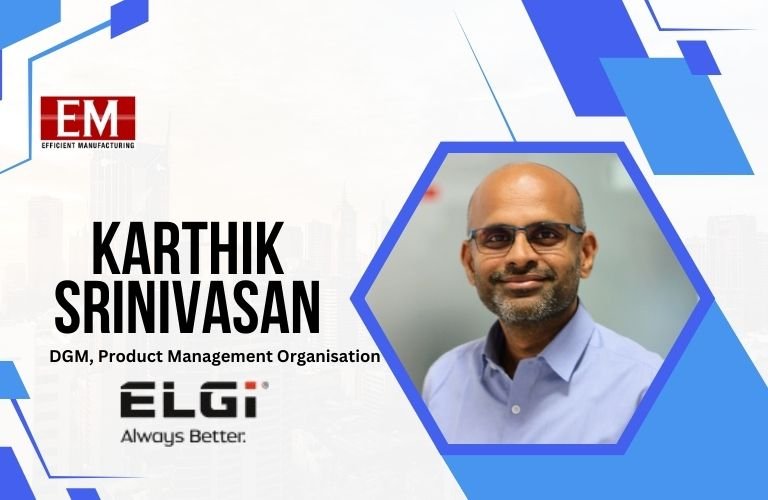| The manufacturing industry in India is changing dramatically, primarily due to the two influences of efficiency and innovation. Mr Antony Anand, Head of Digital Business, Asia at Crown Worldwide Group, examines the shift from paper-ridden, traditional processes to digital document management—specifically, its role in productivity improvement, compliance attestation, and cost-trimming. While India is preparing to take on the responsibility of becoming a global manufacturing hub, it is this digital evolution that becomes critical to staying competitive amidst times of change.
India’s manufacturing landscape stands at the crossroads of transformation. With a renewed commitment to bolster domestic production, the nation’s focus sharpens on the “Make in India” initiative. Amidst this backdrop, the quiet revolution lies in digital document management—a shift from paper to pixels. Traditionally, manufacturing companies have relied heavily on paper-based processes, from the security gate to the disposition of waste. However, the transition to digital document management is not just a trend but a necessity in today’s competitive environment. This article explores the evolution of digital document management, the challenges of traditional paper-based systems, and the innovative approaches that can redefine how manufacturing companies in India operate.
Understanding Paper-Based Document Processes
To appreciate the shift towards digital document management, it is essential to understand the existing paper-based processes within a manufacturing company. These processes begin right at the security gate, where visitor logs and entry records are often maintained on paper. As materials move through the production line, each stage is documented, creating a vast amount of paperwork. From inventory lists and production schedules to quality control reports and shipping documentation, the reliance on paper is pervasive.
One of the critical aspects of these processes is the management of fixed assets. In large manufacturing facilities, tracking assets can be challenging. Paper-based systems often lead to inefficiencies and inaccuracies, resulting in underutilised assets and increased operational costs. Furthermore, the physical storage of documents poses significant challenges, including the risk of fire, damage, and loss. The concept of “fire load” refers to the flammable nature of paper documents, which increases the risk of fire hazards within manufacturing premises. This hidden risk, coupled with the complexity of managing vast amounts of paper, leads to increased costs of compliance and poses significant security risks.
Faceless Audits and Compliance in the Digital Era
Another critical factor driving the move towards digital document management is the need for compliance with regulatory requirements. With the advent of faceless audits by corporate accounts and the Goods and Services Tax (GST) regime in India, the demand for transparency and accuracy in financial reporting has never been higher. Traditional paper-based systems can be cumbersome and error-prone, making it challenging for companies to comply with these requirements. Digital document management systems (DMS) offer a solution by providing a centralised, easily accessible repository of all documents, ensuring that they are accurate, up-to-date, and easily retrievable.
The Hidden Costs of Paper-Based Systems
The costs associated with paper-based systems go beyond the obvious expenses of paper, printing, and storage. The hidden costs include the time and effort required to manage these systems, the risk of data breaches due to the lack of security controls, and the potential for non-compliance fines. Moreover, the inefficiency of paper-based processes can lead to delays in decision-making, affecting the overall productivity of the manufacturing process. The manual nature of these processes also makes them susceptible to human error, which can result in costly mistakes.
The Digital Transformation Journey: A Comprehensive Approach
For manufacturing companies in India, the transition from paper-based to digital document management requires a comprehensive approach. This approach involves understanding the current processes, identifying the pain points, and implementing a structured plan to digitize these processes. Here, we introduce a unique model called the “3C Model”—Capture, Centralise, and Control.
1. Capture: The first step in the digital transformation journey is capturing all relevant documents in digital format. This includes scanning existing paper documents and converting them into electronic records. Advanced technologies like Optical Character Recognition (OCR) can be employed to extract data from these documents, making them searchable and editable. The capture phase also involves the implementation of electronic signatures, which can significantly reduce the reliance on paper for approvals and authorizations.
2. Centralise: Once the documents are captured, the next step is to centralise them in a secure digital repository. A cloud-based DMS offers the advantage of accessibility from anywhere, ensuring that stakeholders have real-time access to the information they need. Centralising documents also enhances security by implementing access controls and encryption, protecting sensitive information from unauthorised access.
3. Control: The final step is to control the flow of documents and data within the organisation. This involves automating workflows, setting up audit trails, and monitoring compliance with regulatory requirements. By automating repetitive tasks, companies can reduce the risk of human error and improve the efficiency of their processes. Additionally, real-time tracking of document status and automated notifications ensure that deadlines are met, and nothing falls through the cracks.
The Role of Electronic Signatures
One of the key enablers of digital document management is the use of electronic signatures. In the manufacturing sector, where approvals and authorizations are required at multiple stages, electronic signatures can streamline processes and reduce turnaround times. They also enhance security by providing a verifiable audit trail of who signed the document and when. In a country like India, where the legal framework supports the use of electronic signatures, manufacturing companies can leverage this technology to transition to paperless processes seamlessly.
Conclusion
The time is perfect for Indian manufacturing companies to adopt digital document management. With the government’s strong focus on boosting manufacturing through the “Make in India” initiative and the nation’s ambitious goal of becoming a $10 trillion economy, this transition is crucial. Digital solutions enhance efficiency, reduce costs, and position companies to capitalise on growth opportunities. The 3C Model—Capture, Centralize, and Control—provides a roadmap for this shift, addressing challenges like high storage costs, limited collaboration, and environmental impact.
As India aims to become a global manufacturing hub, digitalisation will be vital for competitiveness and resilience. This transformation is not just a strategic advantage; it’s essential for participating in India’s economic and technological advancement. Now is the time for Indian manufacturers to lead the charge in the country’s digital and economic revolution.












